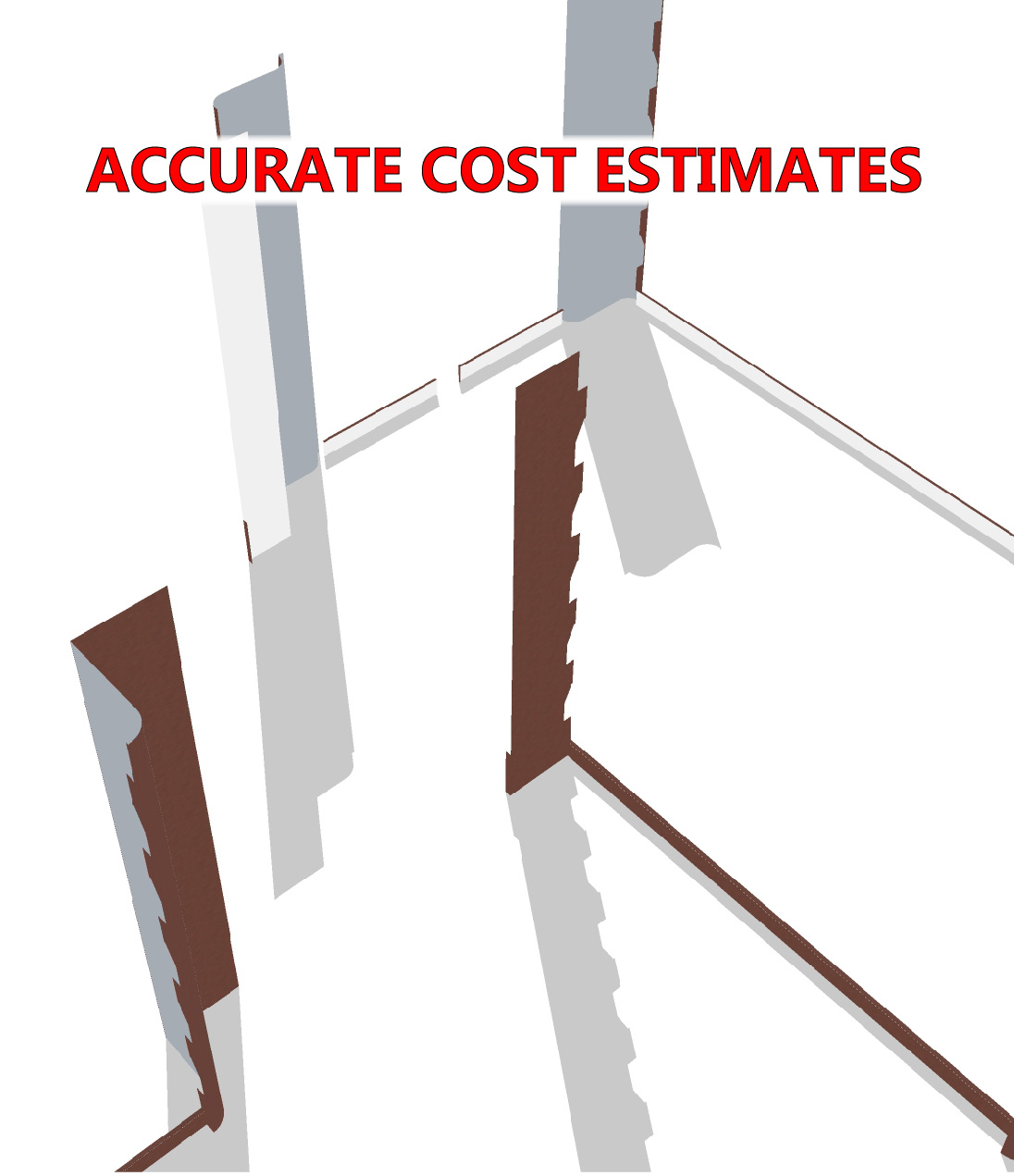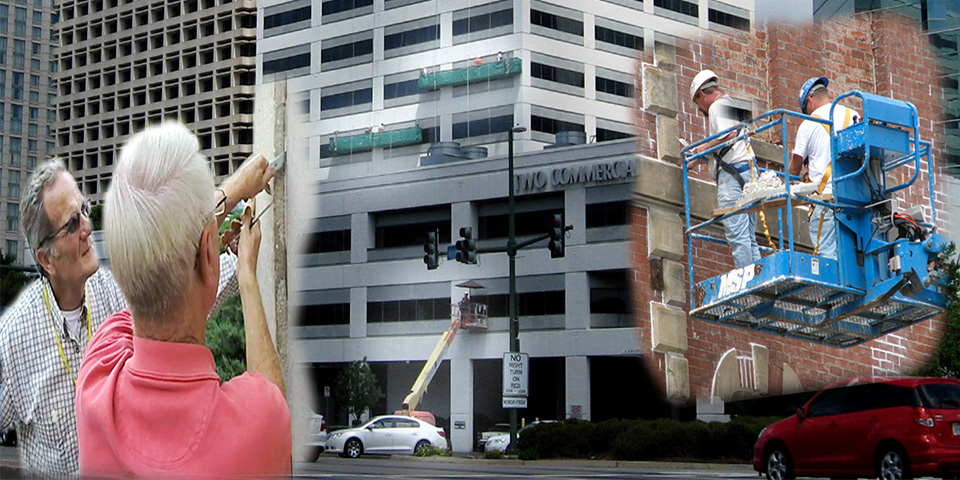
And How to Ensure That it Won’t
A restorations project on a large commercial building will take months and require multiple work crews who will be completing exacting tasks from aerial lifts and swing stage scaffolds. Because of two simple principles and an axiom the quality of nearly all their work, which will ultimately require thousands of hours and millions of motions to complete, has to be good. The materials and methods they use have to be nearly perfect.
In his excellent reference book, “Construction Waterproofing Handbook“, author, Michael T. Kubal cites the two principles. The first is the “90%/1% Principle” which says “90 per cent of all water intrusion problems occur within 1 per cent of the total building or structure exterior surface area.” The second principle is the “99%/1% Principle”. That principle pertains primarily to workmanship because it states that “Approximately 99 per cent of waterproofing leaks are attributable to causes other than material or system failures.” In way of explanation for the 99%/1% Principle Kubal writes, “When considering the millions of square feet of waterproofing systems installed, it can be estimated only 1% of envelope failures and resulting leakage is actually attributable to materials or systems actually failing. The reasons typically involved in failures include human installation errors, the wrong system being specified for in-place service requirements, the wrong or no primer being used, inadequate preparatory work, incompatible materials being transitioned together, and insufficient or in certain cases such as sealants, too much material being applied.”
Typical sealant restoration projects include tens of thousands of linear feet of joints. If one inch of those thousands of feet was not sealed there could very well be a leak and the project will have only been partially successful. If six inches aren’t sealed in four different areas many will consider the project a failure. The occupants of the offices with leaks will be among them. That’s the axiom.
An Erroneous Assessment Will Yield a Flawed Project
A bad assessment of the exterior walls of a building can quickly create problems. For example, let’s say a building is fifteen years old when a storm comes and for the first time in the building’s history, there’s a leak. The response by the building manager or building engineer is to have the window cleaner take some caulk up with him to repair the failed window frame perimeter joint. That seems to work because all’s well until the following year when a storm like the one before passes through and this time the problem returns at the same location as before except it’s worse, which doesn’t make sense to the people in charge because there was an open joint and now there isn’t yet there’s more water inside. How can that be?
So they call a roofer, who reports that the roof, which should last for another ten years at least, is fine, except for some flashing that looks fishy to him, but it’s probably not why water is dripping from the ceiling twenty feet away. He says, “Maybe it’s that flashing and the water that’s getting past it is running down the steel inside. Or it could be the brick”. With that, a mason is brought in who finds that there are some cracked mortar joints so he erects scaffolds and does some tuckpointing, which, except for the inconvenience, a few damaged bushes and the expense, doesn’t hurt. Some joints were cracked and although less water damage occurred during the storm that came the third year, there were still significant leaks and the person in the office with the drips wants to move. After a proper assessment it was found that the original leak wasn’t because of a failed sealant joint. It was because of a clogged weep. The window cleaner did what he was told by installing “caulk” (not sealant) in the frame perimeter joint and in the process he inadvertently closed the weep. Since his instructions were to seal the joints on all the windows in the vicinity of the leak he ended up plugging multiple weeps. With the weeps closed the water that was supposed to flow out of them instead flowed into the adjacent office ruining the ceiling tile and the family pictures the tenant kept on her window sill. The tuckpointing helped because less water penetrated the brick but the water that did soak through still couldn’t flow out of the clogged weeps.
In the example, damage occurred because of an erroneous assessment, which led to a destructive action, which was followed, over a period of years, by ineffective ones.
Whether it’s a problem or multiple problems leads to another set of things that can go wrong. Using the example from before, what if the building manager was right and the problem was failed sealant? In that case the spot repairs may have worked but if joints are failing in one location it’s likely others will soon fail elsewhere. After all, they were all installed originally at the same time. A single leak is a problem that has to be addressed but it could well be indicative of what’s to come.
Hiring a contractor to do restoration work on your building is an expense and a hassle but it should also be seen as an opportunity. Rigging swing stage scaffolds and having aerial lifts on your property isn’t something to be done more than absolutely necessary so when restoration of one kind is needed other work should be considered as well. The first and perhaps most obvious being cleaning. Glass restoration and sealing, mortar joint repair (like in the example), waterproofing and coatings, cleaning and sealing frames and other architectural metal are some of the things that will eventually have to be done. A complete assessment will identify everything that is needed. Even if it all isn’t done in conjunction with the immediate need a comprehensive assessment will let the owner know what he or she will eventually have to accomplish.
To ensure that all the work is identified a complete conditions assessment is needed. The most important things to have in mind during the assessment are the age of the building, past projects and maintenance, the building’s construction method and the components that constitute the building envelope.
This discussion does not include the roof. It is part of the building envelope but the materials, trades, inspection methods and evaluation criteria used for the roof are distinctly different than those used on the building’s exterior, vertical surfaces. The individual or firm assigned to evaluate the walls should report problems he notices with the roof, a separate evaluation, done by someone with the requisite expertise, should be conducted for that critically important building surface.
The primary, critical step in the analysis of the building envelope is the survey. The surveyor of a building envelope examines the building’s joints, its surfaces and its components. To a trained eye, the condition of these building elements provide insight into other matters. The inspection is part of an investigation so in addition to examining the building itself, the surveyor should speak with the building’s occupants and guardians. Property managers who’ve been at the location for a while will know the building’s history so the surveyor will want to hear from them.The people who work in the building, especially if they’ve been there for years can be very informative so the most effective surveys will include conversations with them as well. Occupants know leak locations, their severity and even the conditions that existed when the leak occurred. The building engineer might know details about the building envelope, interior and the roof and where there are problems. A thorough survey will also include a review of the building’s service history and examination of the construction drawings.
Budgets and the limits that the available resources impose should not bear on how the survey is conducted because the purpose is to identify everything that needs to be restored or corrected. The consultant’s analysis and recommendations are among the things the owner will consider as he decides what to include in the current Scope of Work and what to put off until later.
Occasionally the survey is easy. Well designed buildings, even if they’re old, may only need sealant replacement and paint. Sometimes all the needed observations can be made from the ground and the roof. Various tests are typically conducted to determine the condition of existing sealants and coatings, many of which are simple and don’t even require test equipment. Sometimes buildings have multiple problems and need multiple services. In those cases the survey will be proportionally more involved and may require the use of aerial lifts, scaffolding and special tests. On occasion, to be able to diagnose the cause of leaks and other problems, minor demolition may even be recommended.
For the inspection to have been properly conducted all of these activities should have been accomplished or the need for them considered.
What If the Statement of Work is Incomplete or Ambiguous?
A complete and correct assessment is necessary to fully establish the building’s condition but it’s just the first step in the creation of a useful Statement of Work, which is the most important project and contract document.
The Statement of Work has to be complete and it has to be unambiguous. For some projects being unambiguous in describing the work to be done is easy. In new construction, defined in detailed architectural drawings and CSI (Construction Specifications Institute) “Masterformat” documents instructions are all-inclusive. The firm installing the sealant, waterproofing or other moisture control elements is starting from scratch and terms like “all” and “everything” provide pretty clear direction. It’s not the same for restorations and care has to be taken to ensure that all the work is described, so that it is all bid.
A guiding principle for the Statement of Work is anything that is needed for the project that will incur cost for the owner or the contractor has to be identified. This may seem obvious. The contractor will provide the materials and labor and all that will certainly be covered in the SOW but what about the power the tradesmen will use to operate their tools and equipment? Can the contractor use the owner’s electricity and if so, who is responsible for the tie-in to the building? How about water, bathrooms, waste disposal, noise abatement, use of and access to the areas where aerial lifts are to operate, maintenance of a production schedule, storage space for materials and the contractor’s tools and equipment or the repair of incidental damage to grounds and plantings. These are among the things that someone will have to pay for or live with during the course of the project and should therefor be addressed in the Statement of Work if not one of the other contract documents.
It many cases specifying the order of work is necessary. Sealant and coating adhesion is affected by the condition of the substrates onto which the sealants and coatings are applied so adjacent surfaces that are to be sealed or coated with different materials have to be protected from each other. In some cases materials have to cure for specific periods of time before other work can proceed. These conditions and requirements have to be anticipated and complied with so they should be specified.
In these areas the question of what can go wrong and how can those mistakes can be avoided comes down to understanding what will the actual work processes consist of. The project manager may not be knowledgeable in the details of the restorations processes but somewhere along the line someone has to know exactly what’s required and execute accordingly, so steps have to be taken to do so. One of the things the project manager can do is to arrange for specifications to be written that the bidders can use. The contractor doing the work should also be required to create and maintain a functional and complete production schedule based on those specifications.
Flawed Execution Can Spoil Everything
With a clear Statement of Work the contractor knows what to do. Specifications explain how to do it. These two sets of instructions dictate how the work is done to a significant degree but the implementation of these guidelines is up to the contractor and it is at this point that the things that can go wrong enter the physical realm. All the preparatory actions were important but the consequences of them played out on paper, in e-mails and in conference rooms. Neglect or mistakes by work crews on the ground and in the air are a different matter. Implementing the plan and being diligent in doing so is the order of day, every day that crews are on the job.
If the Statement of Work called for a safety survey and the contractor submitted his report on the subject he will have served notice that the crew is aware of the site conditions. Safety of the contractor’s employees, the building occupants, the public and the property must remain a priority for the duration of the project and it’s important to realize that the safety concerns for restorations projects are different than many other types of work. Where men are working on scaffolds and in aerial lifts on and around buildings that are open for business, risks that don’t exist elsewhere need to be constantly averted.
Work quality and whether or not all the work is done are two related points that a good project manager will address. In new construction, inspections are a matter of course. Verification that the work is complete according to the specifications is required before payments are made or permits issued. Inspections of the work are important in restorations projects for some of the same reasons.
Think of what is really happening on a swing stage scaffold four or forty stories off the ground on a hot day in July or a cold one in December. Two men are up there without a supervisor completing a physically difficult task that has to be skillfully completed hundreds of times over. Bricklayers, glaziers, tile setters and all the other trades do comparably demanding work and someone has to check their efforts too but most of the time those trades work where supervisors, inspectors and the owner have access. The work platforms that restorations crews work from may not return to that same place on the building for many years and the crew knows that. This isn’t to say that men who do sealant restoration, envelope waterproofing and other kinds of building envelope work are more prone to take shortcuts than others but it is reasonable to assume that they are no less likely.
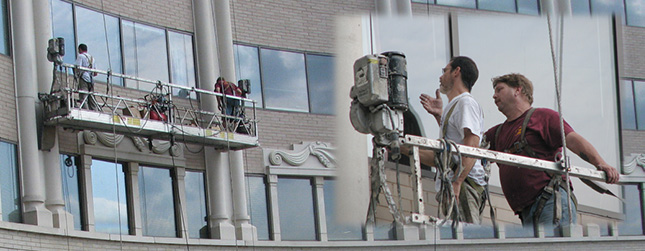
Because of these conditions and realities someone should, somehow, take steps to protect the owner’s interests. Here are a few specific actions that can be taken to get the maximum value from the owner’s investment:
1. Ensure that the Statement of Work and the Specifications have been read by the contractor’s supervisory personnel and that they understand both.
2. Require all installers / applicators to be experienced tradesmen capable of efficiently installing or applying the materials called for. At the first opportunity, and at intervals throughout the project, observe them installing or applying those materials.
3. When new contractor personnel come to work in place of or in addition to those who have already been vetted, verify that the new personnel are qualified.
4. There are several kinds of sealant joints. How they are formed, their dimensions, how three sided adhesion is prevented, how substrates are prepared and other aspects of them vary. All these details are described in the illustrations in the Statement of Work and in the Sealant Joint Specification. Failing to comply with these requirements can easily lead to joint failure. It is therefor prudent to check that all the installers know what is specifically required for each joint type. Despite this, it is not uncommon to learn that even though the contractor’s operations manager is aware of the details the foreman is not. When that’s the case the mechanics will not be aware either and a lot of work can be completed that doesn’t meet the requirements.
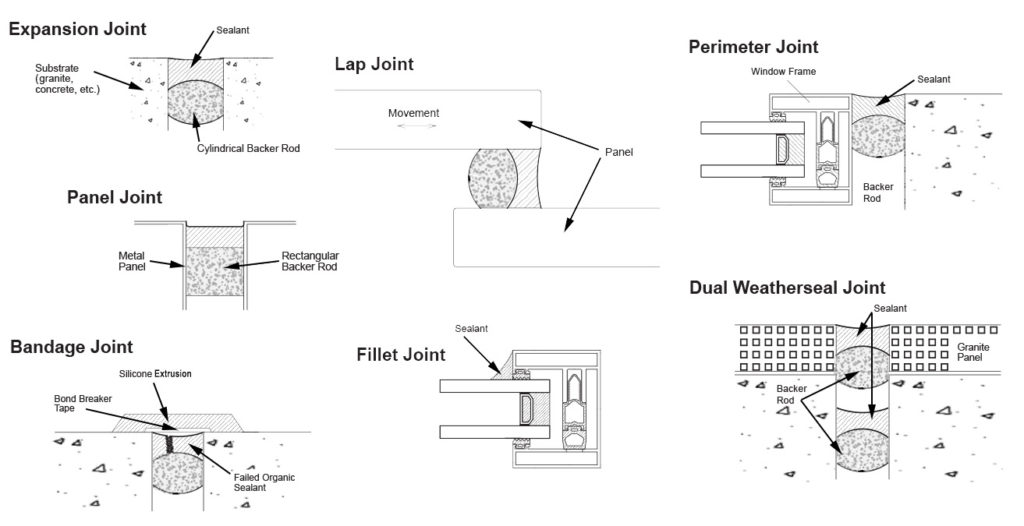
5. Call for tests on the installed or applied materials to verify that they are performing as required. Adhesion tests for coatings and sealants are commonly performed in order to get warranties from materials manufacturers and these tests should be required in the contract specifications. The frequency of the tests in terms of tests performed per thousands of feet of joint or instructions on where tests are to be done should also be part of the specifications.
6. Do random tests for adhesion of sealant and coatings and the effectiveness of waterproofing. Materials manufacturers employ knowledgeable and trained technicians who will perform these tests if asked, often without charge.
7. Require that the owner’s representative be permitted on the work platforms at anytime to perform tests and to check on work quality and completeness. (Take a look at this post at Modlar,com for professional opinions on the value of oversight.)
8. Verify that everything called for on all areas of the building was actually done. This may seem to be an obvious action but it is not necessarily done. This may be because in time trust develops between the contractor’s crew and the owner’s representative, which can be a good thing, but even trustworthy people make mistakes.
A properly run job will include job meetings for various purposes. One of the first will be the Bidders Conference and there will be a pre-construction meeting too. Progress meetings will take place at least once a week during project execution and they will be very important in keeping things on track. One purpose common to each progress meeting will be review of the production schedule and the creation and maintenance of a functional schedule is one of the most useful tasks the contractor’s operations manager will accomplish. It’s value to him is significant and it’s nearly as important to the owner because both want the job finished as soon as possible. Every Progress Meeting should include probing questions regarding the production rate. If milestones are being missed those questions will become increasingly urgent. Even when the project is running ahead of schedule questions intended to reveal any problems that are currently occurring and those that may be lurking can be very helpful.
Close It Out Or it Won’t Be Done
It’s not over till it’s over.
When the end is near a punch list will have to be compiled. These are the items, that for one reason or another, were overlooked. On low buildings (less than four stories) it may be possible to wait to the very end to do the first punch list but on taller buildings, especially if they are irregular in form, it will be advantageous to check for incomplete work at the end of project phases. This is because time is wasted if building faces have to be accessed multiple times. Moving scaffolds around corners or in and out of courtyards can be difficult. Doing so just to look for missed work is to be avoided. Deciding when to conduct inspections for this or any other purpose is another step that a good production schedule will include.
Until fairly recently making punch lists and conducting inspections required human eyes and hands in physical proximity to the surface being examined. These days remotely operated cameras have made it possible to access the building envelope without riding a scaffold or bosuns chair. When it makes sense to do so drones can now be used for inspections and even simpler approaches, such as lowering GoPro cameras on lines and mounting them on telescoping poles can be employed.
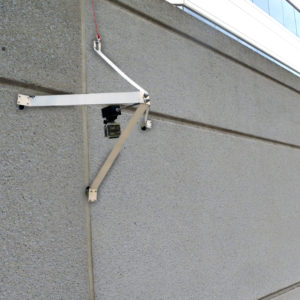
Another thing that can go wrong at this phase of the project is not archiving of the project documents. What was done to the building and when it was done is important information. It supports the owner’s evaluation of the building and its assessed value so the record of the work that’s been accomplished is valuable.
Warranties for both the materials and the labor need to be secured as well. It’s worth noting that in most cases tests and submissions of various kinds are needed throughout the project to secure material warranties so waiting until the final stage of a project to apply for a warranty can be too late.
Conclusion
Restoration of the envelope of a large and valuable commercial building will involve a great deal of effort and considerable expense. It’s less complicated than a lot of things but it isn’t easy. If it’s done with a one page letter, as some actually are, it’s being done on little more than a handshake. In such a case the owners of both hands must really trust each other. It’s much better to come to an agreement based on a clear definition of the work and then execute the project in accordance with all the best practices. In that way it’s far more likely that all parties will be satisfied and the building will retain its value.


